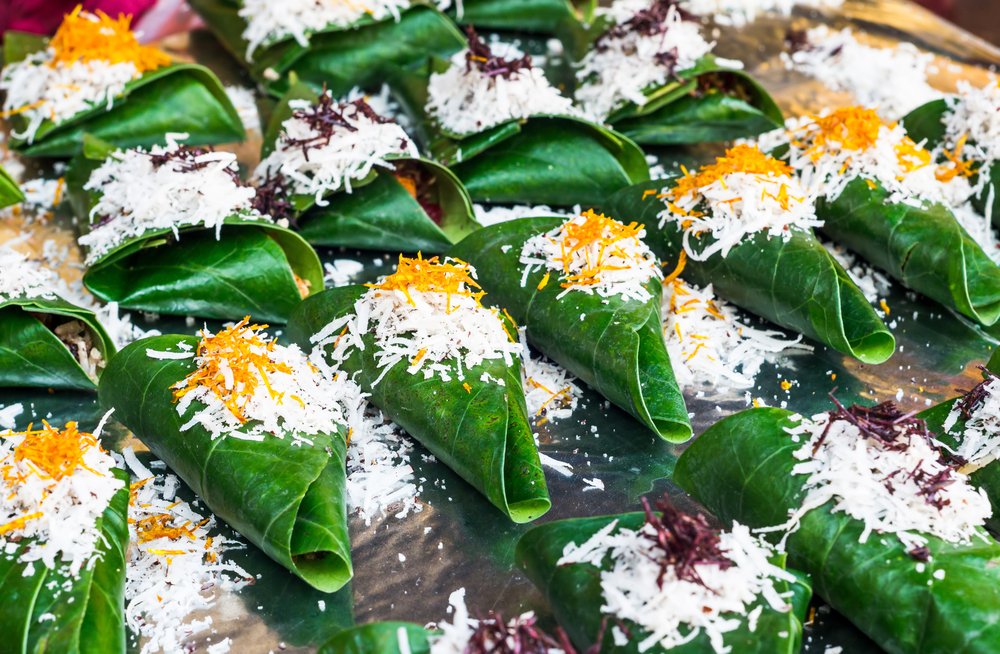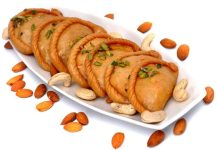Going back to Lucknow on the yearly NRI pilgrimage to India always includes the daily trip to the Paan Wallah. After we have feasted on Moms food and can barely move, saunter down the lane till we happen upon a paan wallah sitting in a closet sized shop blaring loud music and smoke from the dhoop.
“Sada or meetha?” he asks plain or sweet?
“Meetha,” we reply.
He smooths a tender betel leaf. With lightning dexterity, his hands fly over the containers crowding his shop. A little roasted fennel seed, some cloves, cardamom, betel nuts, tobacco paste, coconut flakes and rose paste are all stuffed into the betel leaf, which he folds into a triangle and nails together with a clove.
Without a word, we pop it in and chew. The sweet juices burst in our mouth with a tantalizing mix of flavors and textures the refreshing cardamom, peppery betel leaf, biting cloves, tangy fennel and sweet rose paste. The experience is as seductive and relaxing at the same time.
You keep chewing to release the juices; after about 10 minutes, all that remains is the leafy core. Then you stick out your tongue to see if it is red. You search for the nearest garbage can and spit out the now stringy remains. In India, the potent sada paan is for those with a real habit; most others prefer the meetha paan. I always ask for my meetha paan without any tobacco paste at all.
Back in Jakarta, with a big box of Khajuri Paan secreted in the fridge, I can still experience the taste from time to time but miss the real thing.
Betel leaves are easily available in the vegetable section of supermarkets and the pasar here in Jakarta. Looked up the biggest resource in the world on how to make Paan
Learn more about types of leaves here.
Next time you have a party or watch an Indian movie or just feel nostalgic, make Paan!
By: Sunita S
Contributor Indoindians.com





